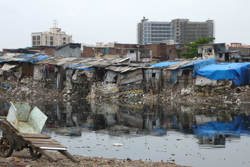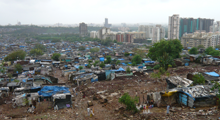Home page > Programme Overview > SOCIAL EXCLUSION, TERRITORIES AND URBAN POLICIES (S.E.T.U.P.): A COMPARISON BETWEEN INDIA AND BRAZIL
SOCIAL EXCLUSION, TERRITORIES AND URBAN POLICIES (S.E.T.U.P.): A COMPARISON BETWEEN INDIA AND BRAZIL
The urban structure in both India and Brazil consists of several dominant megacities (Sao Paulo, Mumbai, Rio, Delhi…), each having a population of more than 11 millions. The second characteristic is the recent process of economic restructuring accentuating social fragmentation in these two emerging countries. The urban population in both countries faces similar challenges, namely the growth of shantytowns called slums in India and favelas in Brazil, spatial disjunction, socially contrasted peri-urbanisation and threats to their ecology. Public actors try to solve these problems through housing, rehabilitation or conservation programmes.
These policies should be viewed from five perspectives:
![]() policies responding to the urban crisis (improvement of slums, etc.);
policies responding to the urban crisis (improvement of slums, etc.);
![]() policies responsible for the crisis (e.g. tertiary management functions in areas inhabited until then by the poor);
policies responsible for the crisis (e.g. tertiary management functions in areas inhabited until then by the poor);
![]() implementation of policies that does not always conform to the letter of the law;
implementation of policies that does not always conform to the letter of the law;
![]() response of the actors concerned to their implementation;
response of the actors concerned to their implementation;
![]() and final impact of these policies.
and final impact of these policies.
 Our hypothesis is that the evolution of these policies, in terms of their ideological background as well as their implementation, induces comparable social changes in the urban space. Is social exclusion growing? Are new conflicts appearing between spaces (centre/periphery) and between sectors (housing / “natural” resources)? Finally we will establish a typology of existing policies, the outcome of which might strongly differ from their official aims: can sanitation projects in slums expel some dwellers who were living on the place planned for water pipe? Conversely, can policies launched for attracting investments (business centres, etc.) have an indirect but positive social impact (availability of jobs in building sites, new bus line)?
Our hypothesis is that the evolution of these policies, in terms of their ideological background as well as their implementation, induces comparable social changes in the urban space. Is social exclusion growing? Are new conflicts appearing between spaces (centre/periphery) and between sectors (housing / “natural” resources)? Finally we will establish a typology of existing policies, the outcome of which might strongly differ from their official aims: can sanitation projects in slums expel some dwellers who were living on the place planned for water pipe? Conversely, can policies launched for attracting investments (business centres, etc.) have an indirect but positive social impact (availability of jobs in building sites, new bus line)?
 Analysing the problem from these different angles and comparing the policies adopted in the two main cities of India and Brazil would make it easier to understand the mechanisms of exclusion and the validity of the actions undertaken. This involves using different disciplinary approaches in a comparative manner in order to analyse ongoing processes and promote reflection on the urban policies, programmes and instruments employed.
Analysing the problem from these different angles and comparing the policies adopted in the two main cities of India and Brazil would make it easier to understand the mechanisms of exclusion and the validity of the actions undertaken. This involves using different disciplinary approaches in a comparative manner in order to analyse ongoing processes and promote reflection on the urban policies, programmes and instruments employed.

